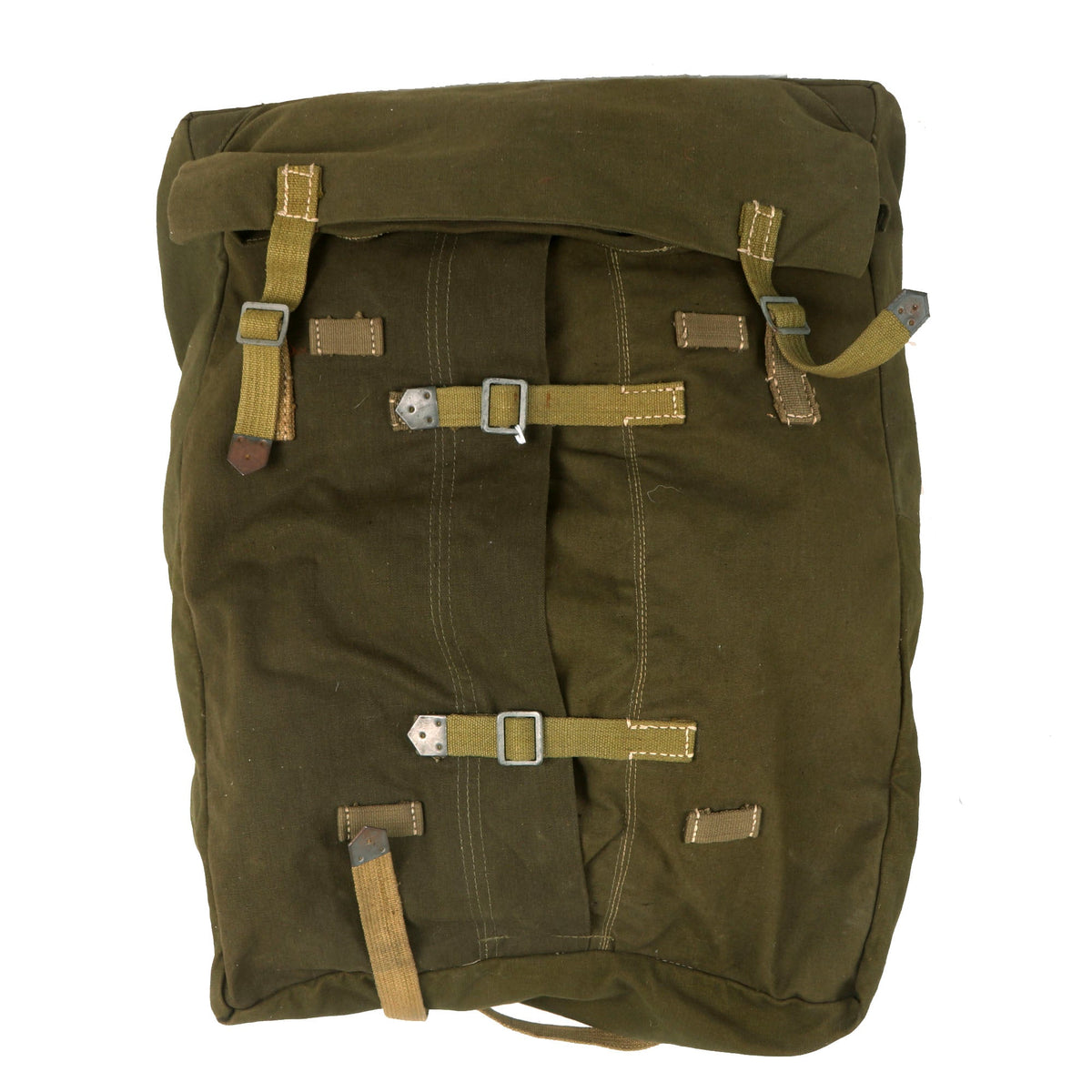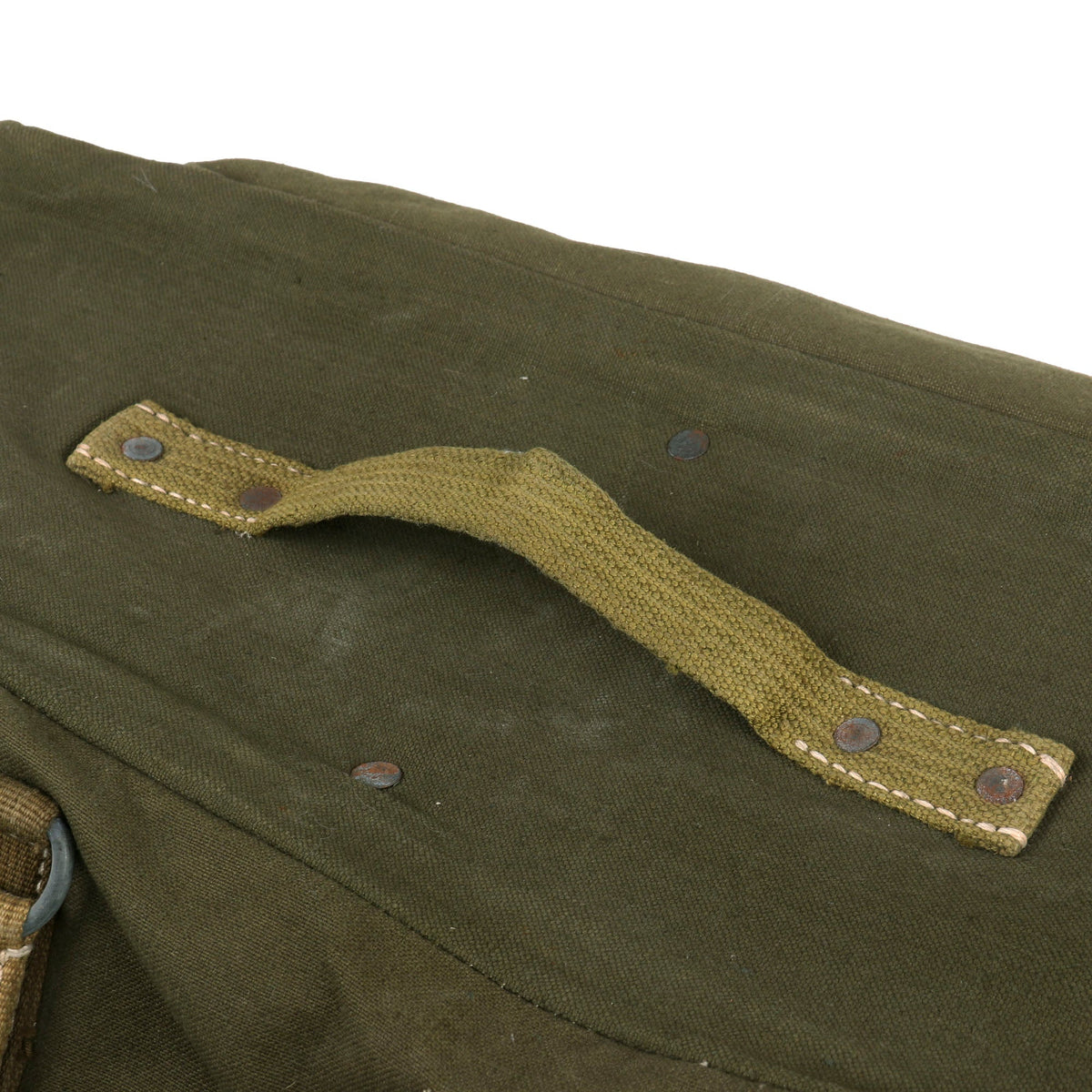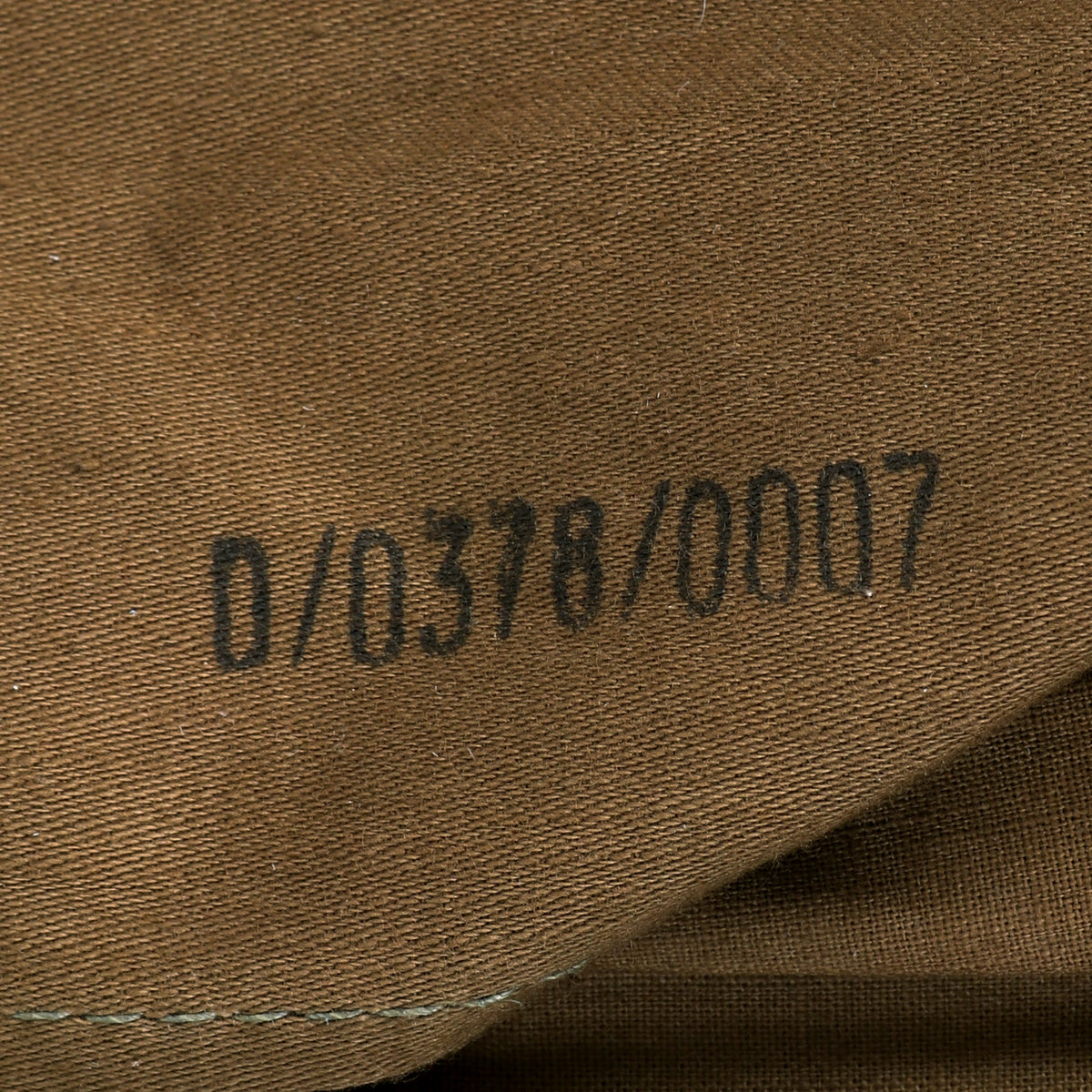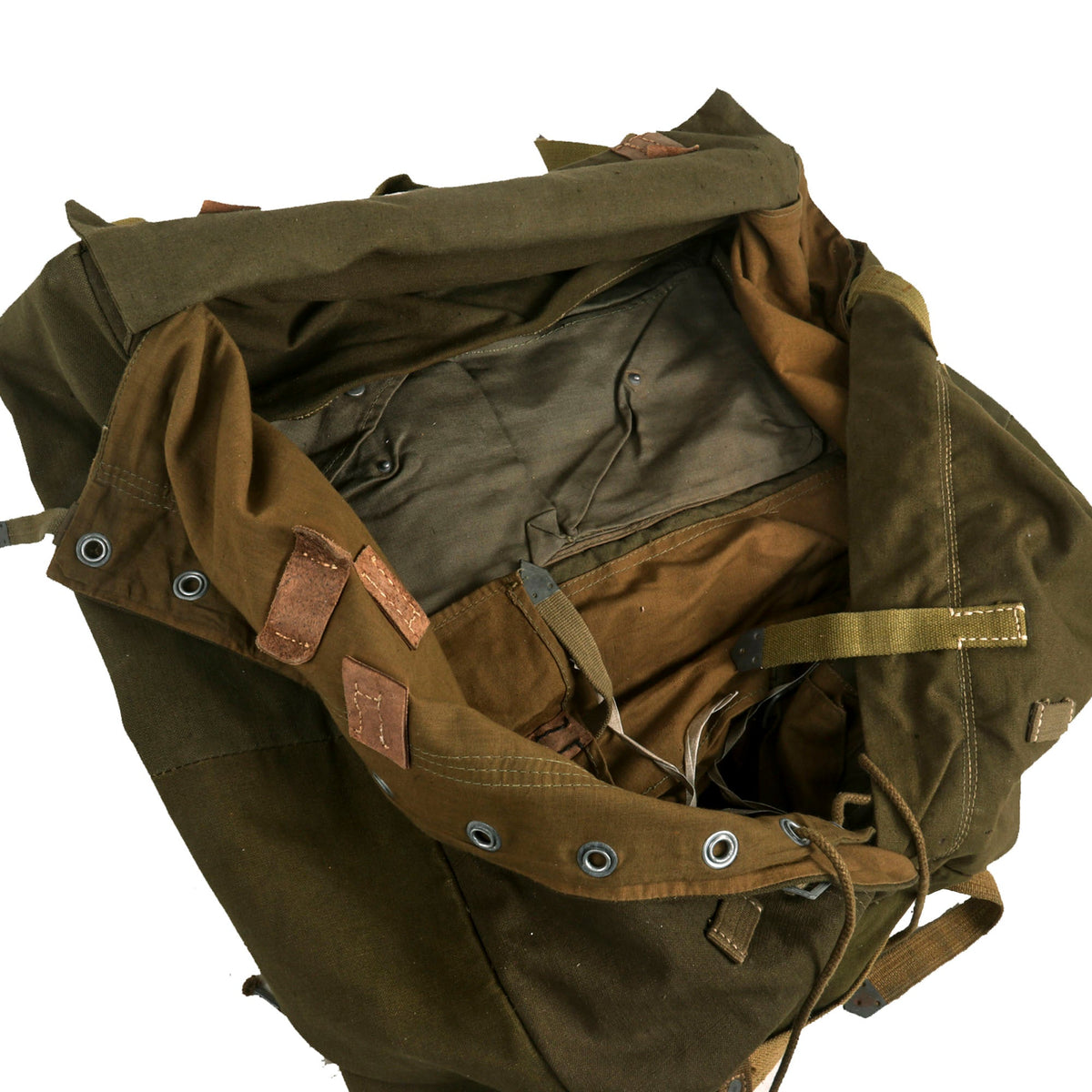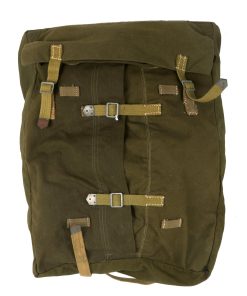Original German WWII Army Heer Afrikakorps Tropical Officer’s Garment Bag – RBNr. Marked Original Items
$ 295,00 $ 118,00
Original Item. Only One Available. In early 1941, the German military began their conquest of southern Europe. Due to the warmer climates of these areas, the German Army needed to equip its troops with a more suitable uniforms and equipment, avoiding the heat retaining wool and moisture sensitive leather. Lighter fabrics were used, and leather was for the most part replaced with fabric webbing. The DAK olive green proved a popular color, and it was then used on all Heer pouches and gear, with the versions destined for use in Europe outfitted with leather straps.
This is a great example of a Heer (Army) officer’s garment bag, made from the correct Afrikakorps DAK olive green. Unlike Enlisted and NCO soldiers, officer’s had to travel with much more in the way of uniforms, and used these large garment bags to carry them. It measures a large 19″W x 24″H x 7 1/2″D, and all of the straps are the correct tan webbing used on DAK equipment. Aside from the leather reinforcements on the inside of the bag where the straps are attached, the pack is made entirely from fabric and metal. It features some great internal pockets, and the closure features both lacing and straps. It is marked on the interior with RBNr. 0/0378/0007 on one of the pockets.
Condition is excellent, and the garment bag does not look to have been used much, if at all. Most of the wear seems to be from age and moisture exposure, not actual use. It is complete, and we did not notice any missing parts. The closure lace is actually still mostly wrapped up, and does not appear to have ever been used. The buckles and end fittings are all present, though some of light oxidation and paint loss. The pockets are all intact, and there are no tears in the fabric that we were able to find.
An excellent example of a Heer Army Officer’s garment bag, intended for use in North Africa.
History of the German Africa Korps
The Afrika Korps or German Africa Corps (Deutsches Afrikakorps or DAK) was the German expeditionary force in Africa during the North African Campaign of World War II. First sent as a holding force to shore up the Italian defense of their African colonies, the formation fought on in Africa, under various appellations, from March 1941 until its surrender in May 1943. The term “Afrika Korps” is pseudo-German (so-called “cod-German”), deriving from an incomplete German title. The German term referred solely to the initial formation, the Deutsches Afrikakorps (DAK), which formed part of the Axis command of the German and Italian forces in North Africa. The name stuck, with both news media and Allied soldiers, as the name for all subsequent German units in North Africa. The unit is known for having been commanded by Field Marshal Erwin Rommel.
The dry climate of Africa proved to be an issue with much of the standard leather field gear that the German Army usually used. It would dry out and crack quickly, and become unusable. To deal with this, the standard field gear such as belts, Y-straps, A-frames, bayonet frogs, and other items, were issued in special tropical web versions.
Fast Shipping with Professional Packaging
Thanks to our longstanding association with UPS FedEx DHL, and other major international carriers, we are able to provide a range of shipping options. Our warehouse staff is expertly trained and will wrap your products according to our exact and precise specifications. Prior to shipping, your goods will be thoroughly examined and securely secured. We ship to thousands clients each day across multiple countries. This shows how we're dedicated to be the largest retailer on the internet. Warehouses and distribution centres can be located throughout Europe as well as the USA.
Note: Orders with more than one item will be assigned a processing date depending on the item.
Before shipping before shipping, we'll conduct a thorough inspection of the items you have ordered. Today, the majority of orders will be delivered within 48 hours. The delivery time will be between 3-7 days.
Returns
The stock is dynamic and we cannot completely manage it because multiple stakeholders are involved, including our factory and warehouse. So the actual stock may alter at any time. It's possible that you may not receive your order once the order has been made.
Our policy is valid for a period of 30 days. If you don't receive the product within 30 days, we are not able to issue a refund or an exchange.
You can only return an item if it is unused and in the same state as the day you received it. You must have the item in its original packaging.
Related products
Uncategorized
Angolan Rebel 1970s era 60mm Inert Display Mortar from Angolan Civil War Original Items
Uncategorized
Uncategorized
Armored Burgonet Helmet & Polearm from Scottish Castle Leith Hall Circa 1700 Original Items
Uncategorized
Australian WWII Owen MK1 Machine Carbine SMG Custom Fabricated Replica with Sling Original Items
Uncategorized
Uncategorized
Uncategorized
Uncategorized
Uncategorized
Uncategorized
Uncategorized
Uncategorized
Uncategorized
Uncategorized
Uncategorized
Armoured Fighting Vehicles of the World: AFVs of World War One (Hardcover Book) New Made Items
Uncategorized
Uncategorized
Uncategorized
Uncategorized
